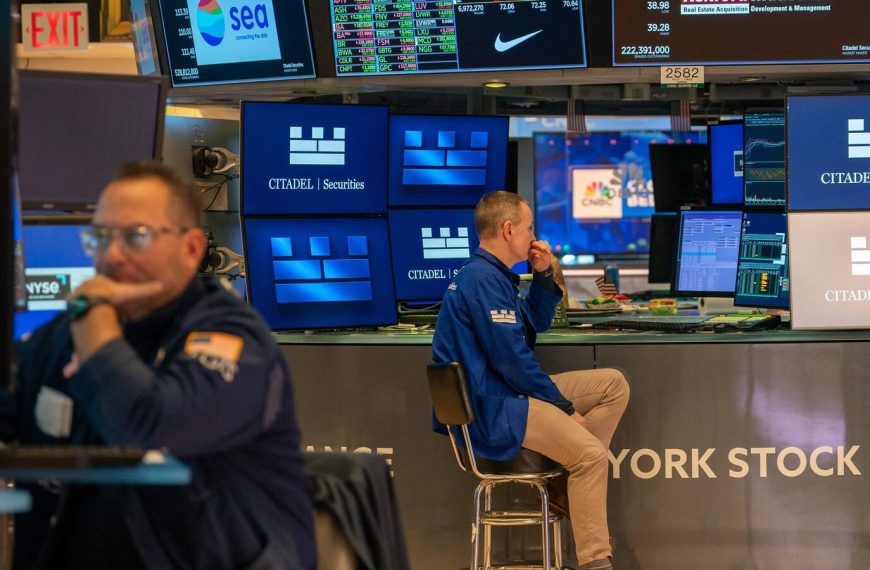Wall Street’s Selloff Sparks Discussions of the Fed’s Role in Stabilizing Markets
As stock prices tumble, the age-old concept of the "Fed put" has resurfaced in conversations among investors and analysts alike. This term refers to the belief that the Federal Reserve will step in to support the market during downturns. However, the current landscape suggests that the threshold for the Fed to intervene might be higher than ever before.
Understanding the Fed Put Concept
The idea of the Fed put originated during Alan Greenspan’s tenure from 1987 to 2006 and has become ingrained in the mindset of investors over the years. While part of the Federal Reserve’s responsibility includes maintaining financial stability, the mechanisms through which they provide support can vary. Historical events like the Global Financial Crisis of 2007-2009 and the economic fallout from the 2020 pandemic exemplify instances where the Fed took decisive action.
- The Fed put can manifest in several ways:
- Emergency rate cuts
- Quantitative easing (QE)
- Adjustments in policy statements to calm market fears
Current Market Conditions
The recent selloff is not on par with previous financial crises, yet there is rising speculation about potential Fed action as major indices, including the Nasdaq, have fallen more than 10% from their peaks. The S&P 500 is not far behind, sparking concerns about broader economic implications.
- Notable statistics include:
- $5 trillion lost in U.S. stock value within weeks
- The Roundhill equal-weighted ‘Magnificent Seven’ ETF down 20% since December
Given that the wealthiest 10% of Americans now account for 50% of consumer spending, declines in stock prices could have a ripple effect throughout the economy.
Financial Conditions Under Scrutiny
Policymakers are closely monitoring financial conditions, which have tightened significantly, as reported by Goldman Sachs. This tightening correlates closely with the recent drop in equity markets. However, it appears that a substantial market decline would be necessary to provoke a policy response.
- Current market indicators show:
- Volatility in equities and bonds is rising but remains below levels typically seen in crises.
- U.S. high-yield credit spreads have widened beyond 300 basis points, yet this is still far from the extreme spreads of previous decades.
The Economic Landscape
The current economic climate indicates that markets may need to experience a more severe downturn before policymakers consider intervention. Notably, the potential impacts of tariffs from the Trump administration could complicate the economic recovery. Tariffs might lead to higher prices while slowing growth, potentially creating a scenario of stagflation—a challenging dilemma for the Fed.
- The S&P 500 typically experiences an average downturn of 14% from its peak, and even then, it often concludes the year higher without Fed intervention. Presently, the market is 10% off its peak, suggesting there might still be room for recovery.
Contrasting Views on Market Intervention
While Treasury Secretary Scott Bessent has stated that there is no "Trump put," and President Trump has downplayed market fluctuations, experts suggest that a Fed intervention is more likely. In contrast to the administration’s stance, Fed Chair Jerome Powell has indicated that the central bank has tools ready to deploy in times of significant economic distress.
- Morgan Stanley analysts emphasize that the probability of a Fed put is significantly higher than a Trump put, highlighting the Fed’s readiness to act if necessary.
In conclusion, while the Fed’s role in stabilizing markets remains a topic of debate, the current economic and market conditions suggest that the central bank’s intervention may not be imminent. Investors should remain vigilant as the situation evolves and keep an eye on potential policy adjustments in response to market changes.











